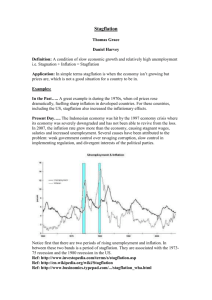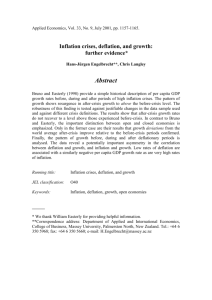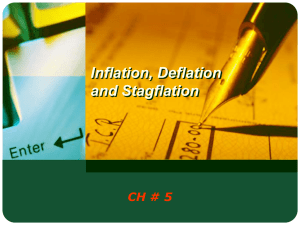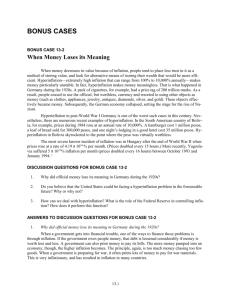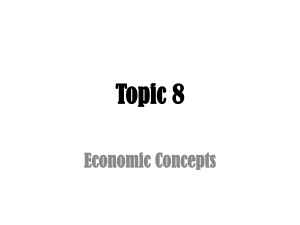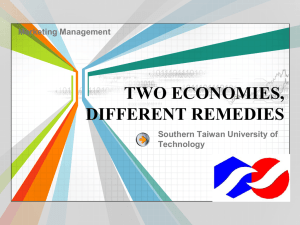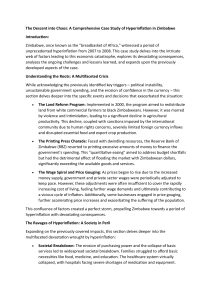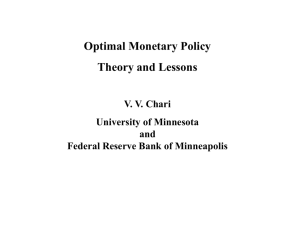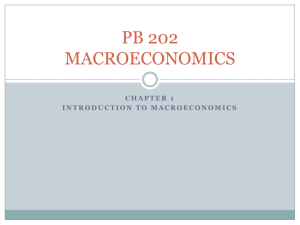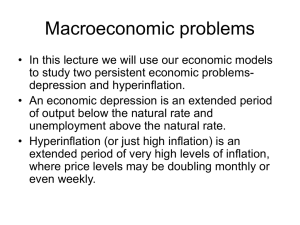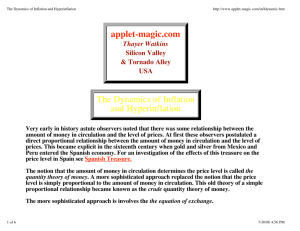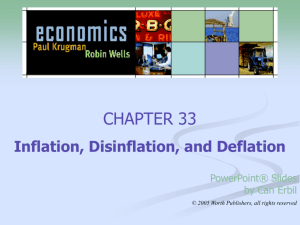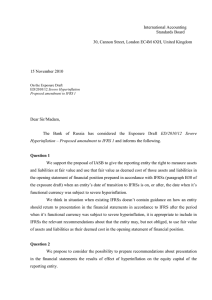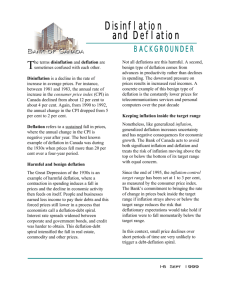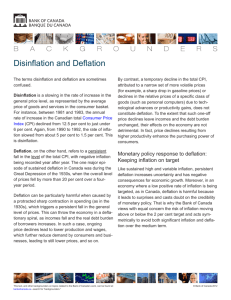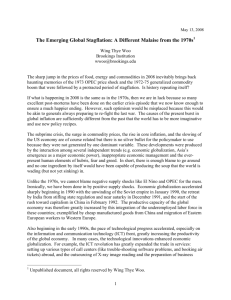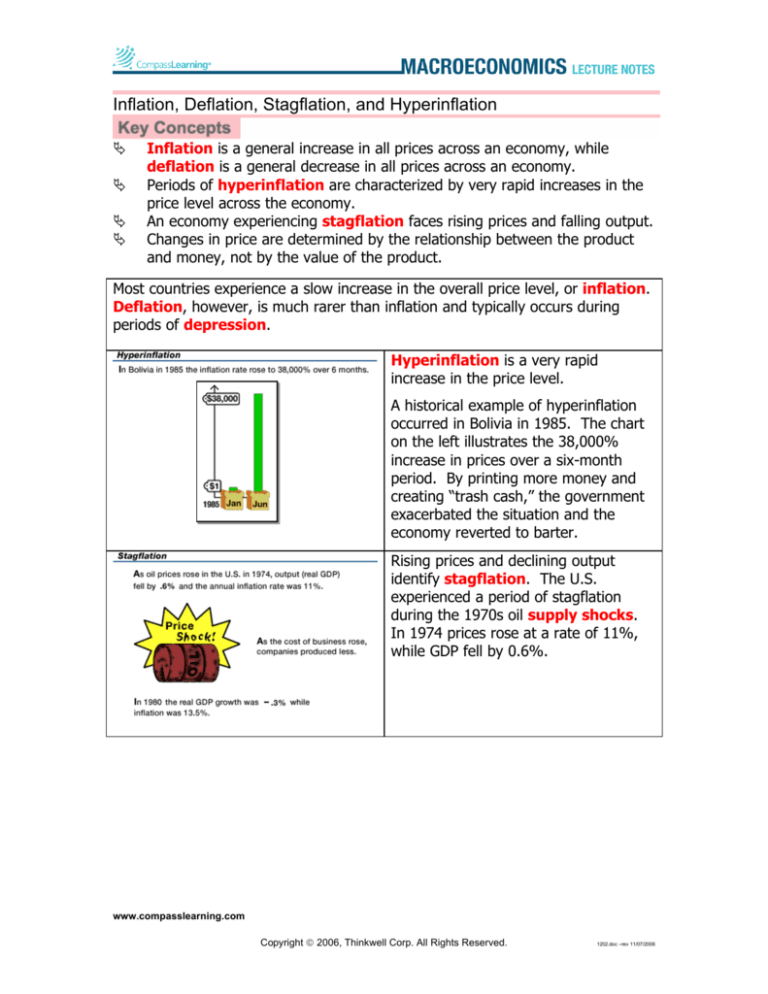
Inflation, Deflation, Stagflation, and Hyperinflation
Ä
Ä
Ä
Ä
Inflation is a general increase in all prices across an economy, while
deflation is a general decrease in all prices across an economy.
Periods of hyperinflation are characterized by very rapid increases in the
price level across the economy.
An economy experiencing stagflation faces rising prices and falling output.
Changes in price are determined by the relationship between the product
and money, not by the value of the product.
Most countries experience a slow increase in the overall price level, or inflation.
Deflation, however, is much rarer than inflation and typically occurs during
periods of depression.
Hyperinflation is a very rapid
increase in the price level.
A historical example of hyperinflation
occurred in Bolivia in 1985. The chart
on the left illustrates the 38,000%
increase in prices over a six-month
period. By printing more money and
creating “trash cash,” the government
exacerbated the situation and the
economy reverted to barter.
Rising prices and declining output
identify stagflation. The U.S.
experienced a period of stagflation
during the 1970s oil supply shocks.
In 1974 prices rose at a rate of 11%,
while GDP fell by 0.6%.
www.compasslearning.com
Copyright ã 2006, Thinkwell Corp. All Rights Reserved.
1202.doc –rev 11/07/2006


